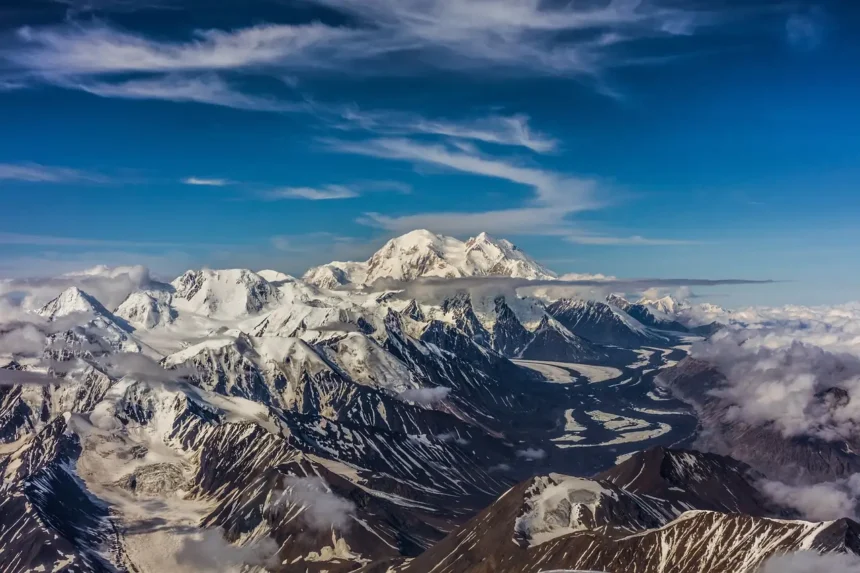⫸ Introduction
North America boasts some of the world’s most awe-inspiring mountain ranges, home to the Top 10 Tallest Mountains of North America. These majestic peaks, sculpted by eons of geological forces, stand as testaments to nature’s grandeur and resilience. The continent’s diverse landscapes offer a rich tapestry of mountainous terrain, from the snow-capped summits of Alaska to the volcanic peaks of Mexico.
Mountains shape weather patterns, provide freshwater sources, and foster unique ecosystems. They also hold immense cultural significance, serving as sacred sites, sources of inspiration, and challenging destinations for adventurers.
In this article, we embark on a virtual journey to uncover the secrets of the Top 10 Tallest Mountains of North America. We’ll delve into their geological formations, explore their ecological importance, and unveil the cultural stories woven into their towering heights. Prepare to be captivated by the diverse beauty and fascinating tales surrounding these natural wonders.
⫸The Top 10 Tallest Mountains of North America
1. Denali (formerly Mount McKinley)
Towering at a staggering 20,310 feet (6,190 meters), Denali, also known as Mount McKinley, reigns supreme as the highest mountain in North America. Located in the heart of Alaska’s Denali National Park and Preserve, this majestic peak is a beacon for mountaineers and nature enthusiasts. Denali’s geological significance lies in its formation as part of the Alaska Range, resulting from tectonic plate collisions that continue to shape the landscape.
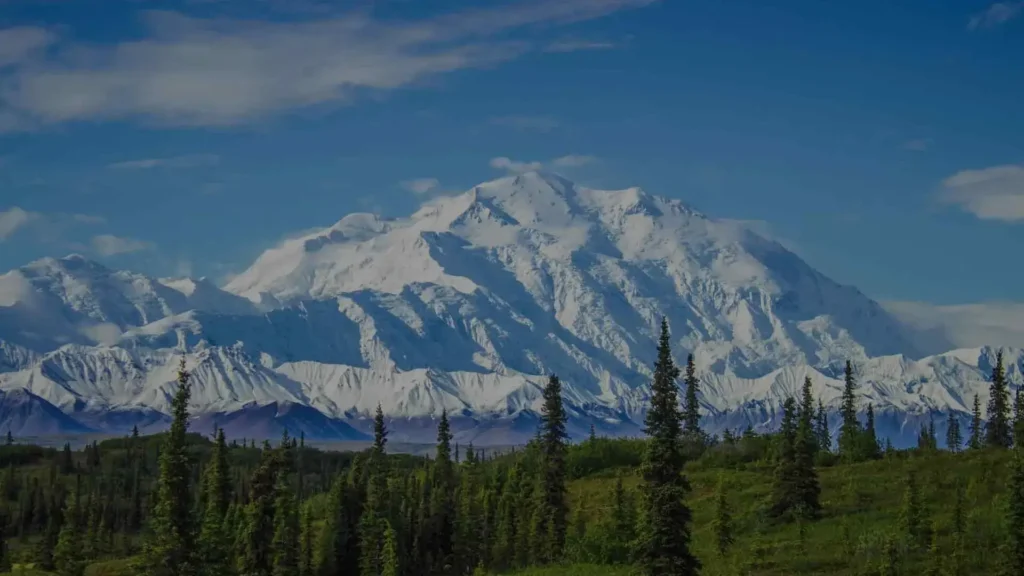
Ascending Denali is not for the faint of heart. The extreme weather conditions, including sub-zero temperatures and hurricane-force winds, pose formidable challenges. The mountain’s high altitude can also lead to altitude sickness, requiring climbers to acclimatize gradually. However, those who brave the climb are rewarded with unparalleled views of the surrounding wilderness, a sense of accomplishment, and a deep connection with nature’s raw power.
Long before it was known as Denali or Mount McKinley, this peak held immense cultural significance for the indigenous people of Alaska. The Koyukon Athabaskans called it “Denali,” meaning “the high one.” This name reflects their deep respect for the mountain’s spiritual essence and role as a landmark in their traditional lands. The mountain’s renaming to Denali in 2015 recognized its indigenous heritage and was a step towards honoring the cultural connection to this natural wonder.
2. Mount Logan
In the heart of Canada’s Yukon Territory lies the awe-inspiring Mount Logan, the second-highest peak in North America and a true giant among the top 10 tallest mountains of North America. Its sprawling glaciers, icy plateaus, and formidable weather patterns make it a destination for experienced mountaineers seeking a thrilling challenge.
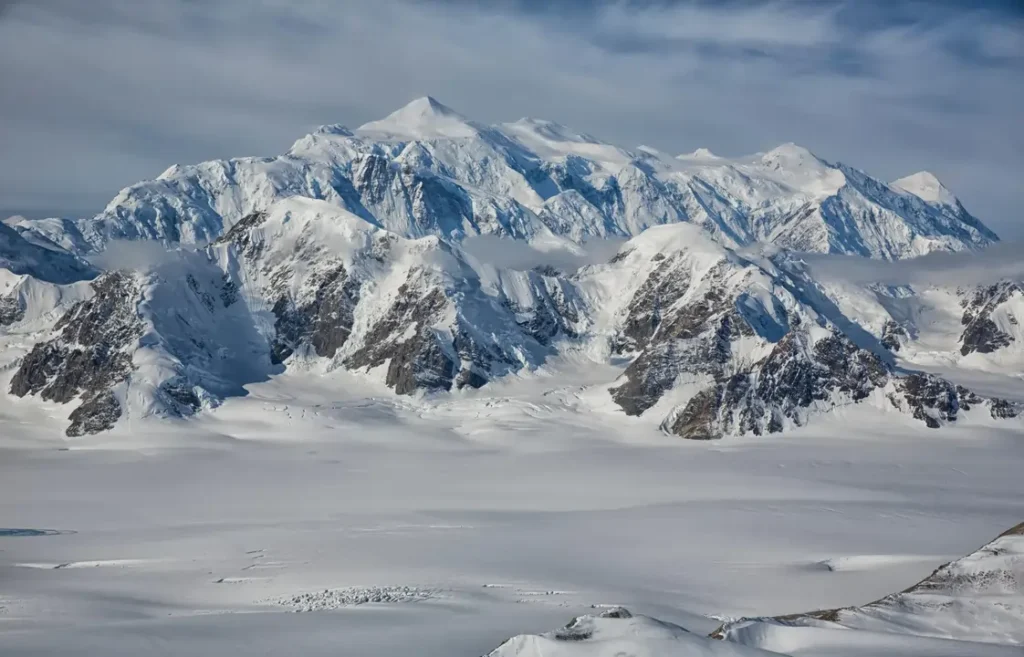
Mount Logan is located in the rugged Saint Elias Mountains, a remote and breathtaking wilderness area. At a staggering elevation of 5,959 meters (19,551 feet), it commands a breathtaking panorama of jagged peaks and vast ice fields. Its unique characteristics include extensive glacial systems, extreme weather conditions, and diverse geological formations.
Beyond its mountaineering appeal, Mount Logan is a valuable site for scientific research. Due to its high altitude and pristine environment, it serves as a natural laboratory for studying climate change, glaciology, and atmospheric science. Researchers have studied ice core samples, weather patterns, and the mountain’s unique ecosystem, contributing valuable insights into our understanding of the planet.
3. Pico de Orizaba (Citlaltépetl)
Rising majestically above the clouds, Pico de Orizaba, or Citlaltépetl, is the third-highest peak in North America and the tallest volcano in Mexico. This dormant stratovolcano boasts an elevation of 18,491 feet (5,636 meters) above sea level, making it a prominent landmark on the Trans-Mexican Volcanic Belt. Its symmetrical cone, often capped with snow, can be seen from miles away, captivating all who behold it.
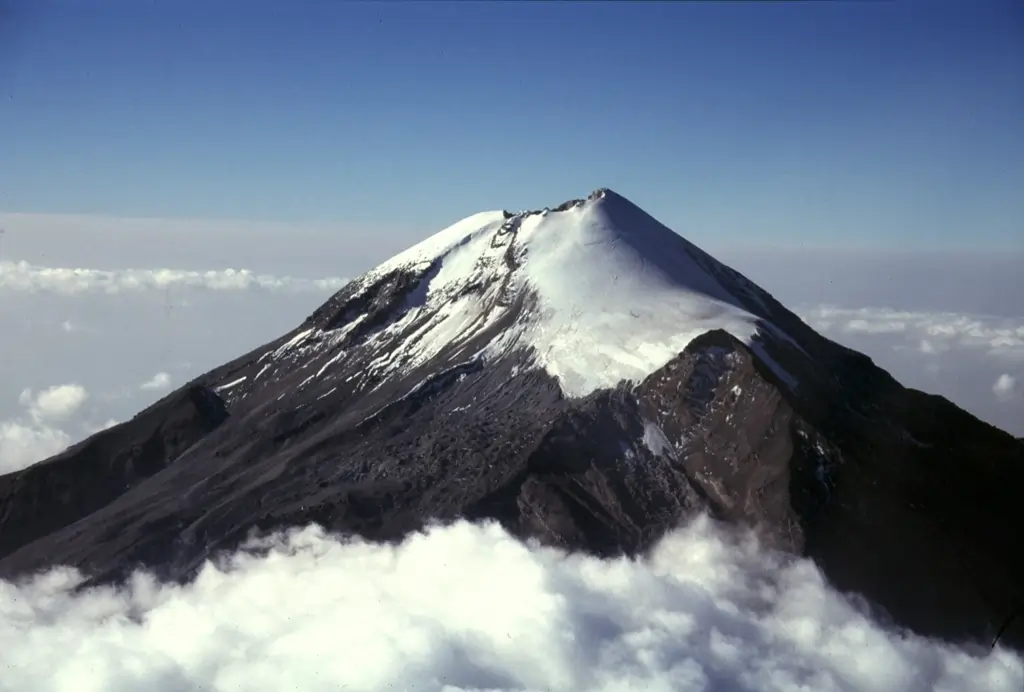
Pico de Orizaba is in central Mexico, straddling the border between Puebla and Veracruz. Its volcanic history is a testament to the dynamic forces shaping the region. The mountain’s last major eruption occurred in the 19th century, but it remains a site of ongoing geological activity, with occasional fumaroles releasing steam and gases.
Pico de Orizaba holds deep cultural significance for the indigenous people of Mexico. In Aztec mythology, the mountain is associated with the goddess Citlalicue, the “Lady of the Starry Skirt,” who was believed to dwell within its fiery depths. The peak is also revered as a sacred site by other indigenous groups, who have woven its towering presence into their creation stories and spiritual traditions.
4. Mount Saint Elias
Straddling the border between Alaska (USA) and Yukon (Canada), Mount Saint Elias is the second-highest mountain in both countries. This icy behemoth boasts a staggering elevation of 18,008 feet (5,489 meters), making it challenging for even experienced mountaineers.
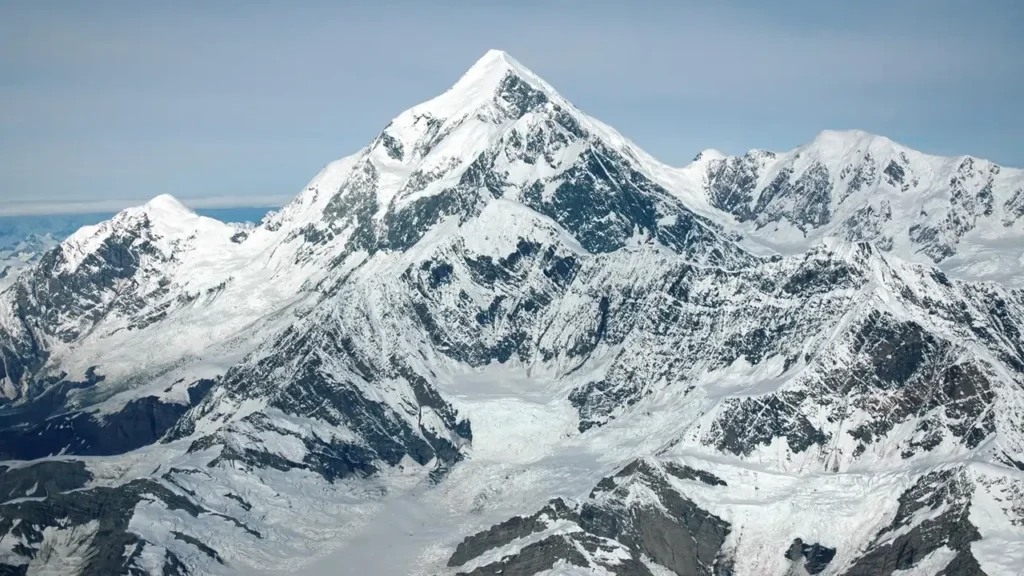
The international border between the United States and Canada traverses Mount Saint Elias, making it a unique landmark shared by two nations. Its summit offers breathtaking panoramic views of both countries’ vast wilderness areas.
Mount Saint Elias has a rich history of expeditions and explorations. The first recorded ascent was in 1897 by a team led by renowned Italian explorer Luigi Amedeo, Duke of the Abruzzi. Since then, numerous mountaineers have attempted this challenging peak, lured by its remote location and stunning beauty. The mountain’s glaciers and extreme weather conditions make it a formidable challenge, requiring careful preparation and expert mountaineering skills.
5. Popocatépetl
Popocatépetl, also known as “El Popo,” is an active volcano southeast of Mexico City. As the second-highest peak in Mexico and the fifth-highest in North America, Popocatépetl poses a significant geological and cultural landmark. Its regular eruptions and proximity to densely populated areas make it one of the most closely monitored volcanoes in the world.
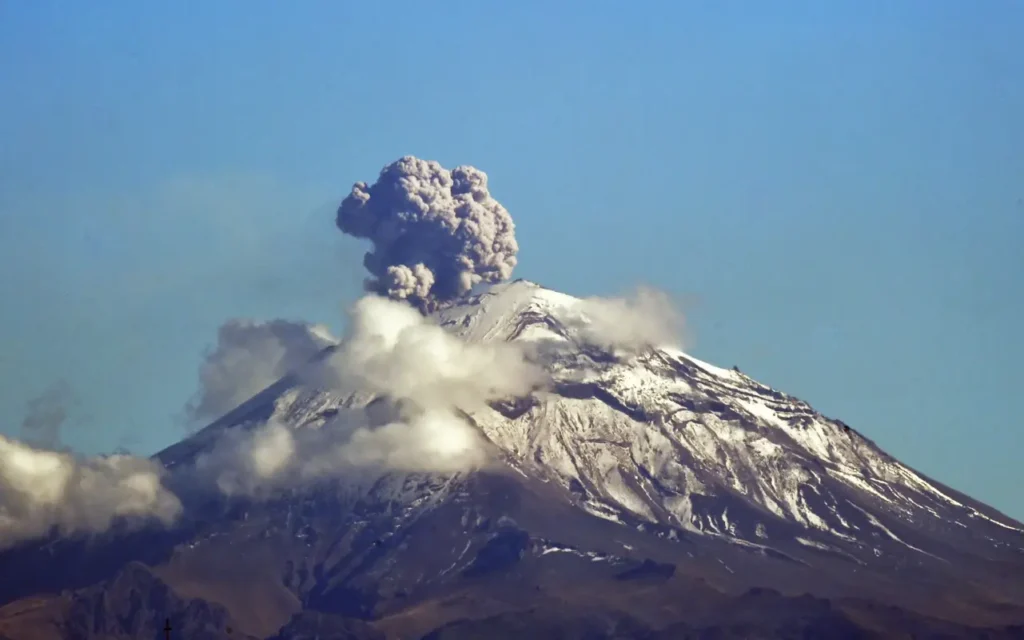
Popocatépetl’s frequent eruptions have shaped the landscape and cultural beliefs of the region. The volcano’s activity is a constant reminder of the powerful forces beneath the Earth’s surface. Despite the inherent risks, the volcano’s slopes and surrounding areas are home to diverse ecosystems and communities that have learned to coexist with this natural wonder.
Due to the potential hazards of Popocatépetl’s eruptions, extensive monitoring systems have been implemented to track its activity and provide early warnings. Scientists and authorities work together to assess risks and implement evacuation plans to protect the millions of people living in the surrounding areas. These efforts underscore the importance of balancing scientific research, public safety, and respect for the natural world when dealing with active volcanoes.
6. Mount Foraker
Towering at 17,400 feet (5,304 meters), Mount Foraker stands as the third-highest peak in the United States and the sixth-highest in North America. Located in Alaska’s Denali National Park and Preserve, this imposing mountain is known for its dramatic glaciers, rugged terrain, and formidable climbing routes.

Located just 14 miles southwest of Denali, Mount Foraker is a frequent side expedition for those conquering the highest peak in North America. However, despite its proximity, Foraker presents its own unique challenges and rewards for climbers.
Mount Foraker’s steep slopes, unpredictable weather, and high altitude make it a demanding climb. It requires advanced mountaineering skills, including ice climbing and crevasse rescue expertise. Nevertheless, the stunning panoramic views from the summit, which include Denali’s massive peak, make the arduous journey worthwhile.
7. Iztaccíhuatl
Often overshadowed by its neighbor Popocatépetl, Iztaccíhuatl is a dormant volcano in central Mexico. Rising to an elevation of 5,230 meters (17,160 feet), it is the third-highest mountain in Mexico and one of the top 10 tallest mountains of North America.
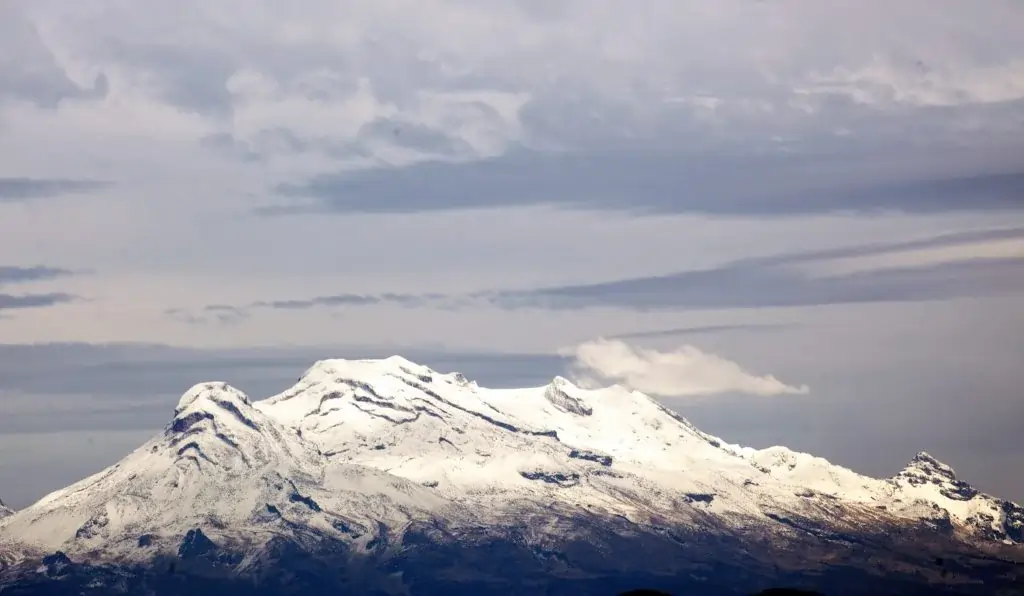
Iztaccíhuatl’s distinctive profile, resembling a sleeping woman, has inspired numerous legends and stories in Mexican folklore. Its last eruption is believed to have occurred over 11,000 years ago, and while considered dormant, it remains a geologically active site.
In Aztec mythology, Iztaccíhuatl is often depicted as a princess who died of a broken heart, her body transformed into the mountain we see today. The name “Iztaccíhuatl” translates to “White Woman” in the Nahuatl language, a reference to the snow-covered peaks that resemble a woman’s head, chest, knees, and feet. The mountain is a symbol of love, loss, and the enduring power of nature, and it continues to hold deep cultural significance for the people of Mexico.
8. Mount Lucania
In the remote heart of the Yukon, Canada, lies the formidable Mount Lucania, the third-highest peak in Canada and one of the top 10 tallest mountains of North America. Its imposing presence at 5,226 meters (17,146 feet) has beckoned intrepid mountaineers to test their skills against its icy slopes and challenging weather conditions.
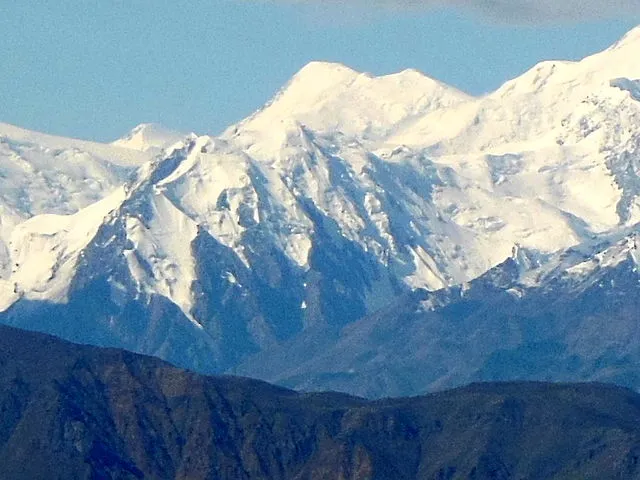
Mount Lucania’s isolation within Kluane National Park and Reserve adds to its allure. Situated about 65 kilometers north of the more famous Mount Logan, Lucania is surrounded by glaciers and ice fields, creating a formidable environment for climbers. Its remoteness requires careful planning and logistical expertise for any expedition.
Mount Lucania was first ascent in 1937 by an American expedition led by Bradford Washburn. It wasn’t climbed again until 1967, highlighting the peak’s difficulty and the limited number of expeditions that venture into this remote region. Despite its challenges, Mount Lucania attracts mountaineers seeking a true test of skill and endurance in the heart of North America’s wilderness.
9. King Peak
A formidable peak in the heart of Canada’s Yukon territory, King Peak soars to an elevation of 16,971 feet (5,173 meters), securing its place among the top 10 tallest mountains of North America. Its remote location and challenging terrain make it a coveted prize for experienced mountaineers.
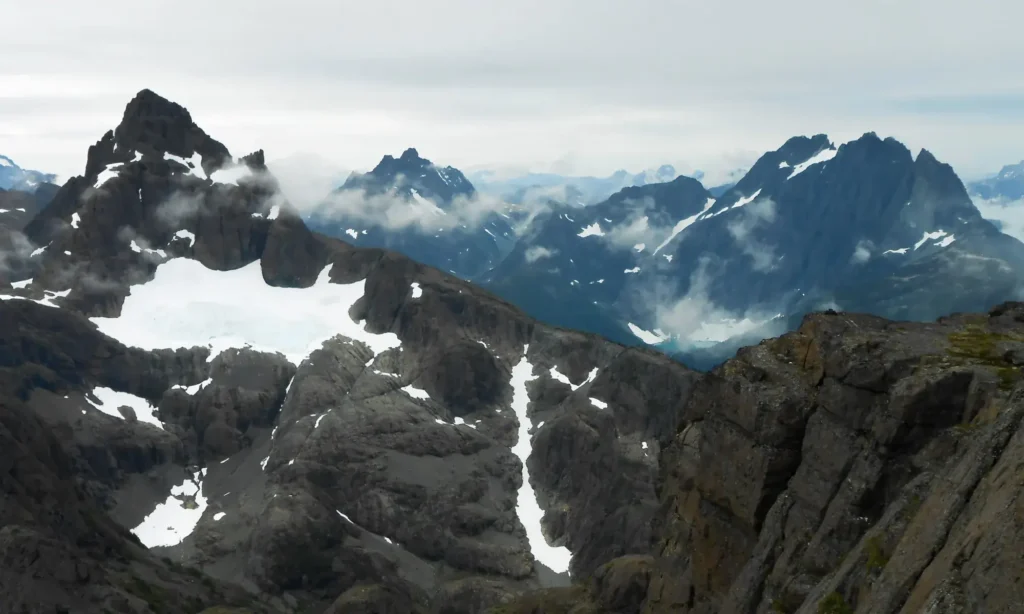
King Peak is a prominent member of the St. Elias Mountains, a vast range that straddles the border between Alaska and Canada. This rugged landscape is home to some of the highest and most glaciated peaks in North America, offering a playground for adventurers and a haven for wildlife.
Ascending King Peak is not for the faint of heart. The mountain demands technical climbing skills, as its steep slopes, crevasses, and unpredictable weather present significant challenges. Climbers must be well-versed in glacier travel, ice climbing, and avalanche safety to conquer this formidable peak. Despite the difficulties, the rewards of reaching the summit are immense, with breathtaking views that stretch across the vast wilderness of the St. Elias Mountains.
10. Mount Steele
Located in the Yukon Territory of Canada, Mount Steele stands as the fifth-highest peak in North America, reaching an elevation of 16,470 feet (5,020 meters). Part of the Saint Elias Mountains, this glaciated giant offers stunning views and a formidable challenge for climbers.
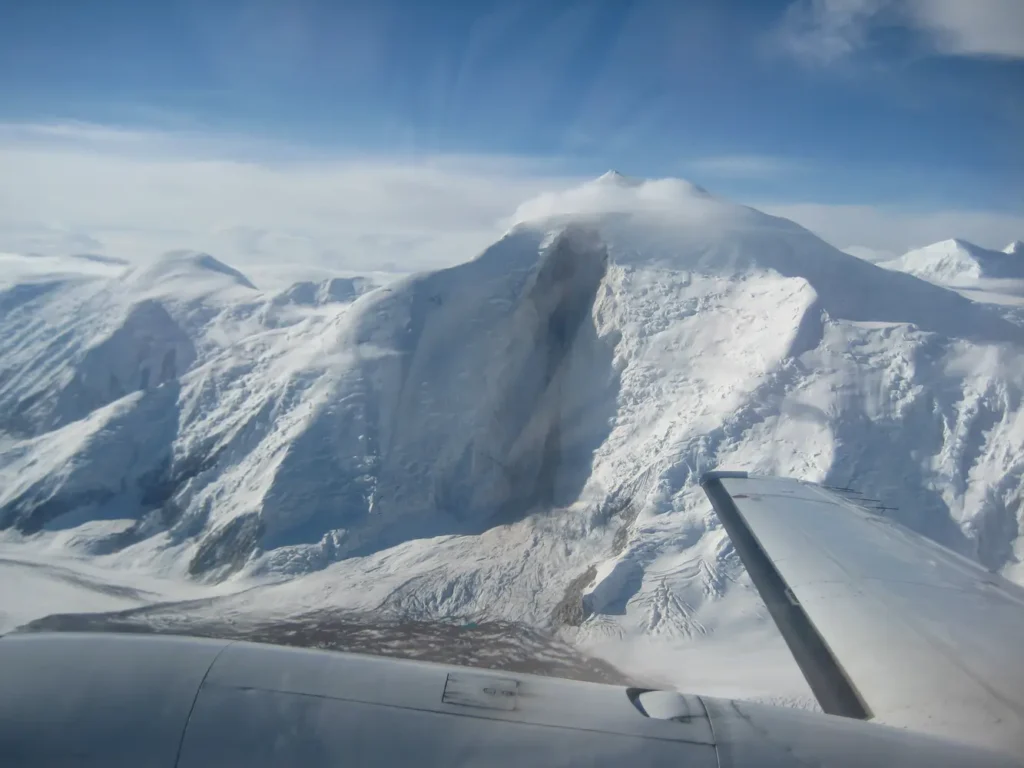
Mount Steele is renowned for its extensive glaciers, including the massive Steele Glacier that descends from its slopes. These icy formations not only add to the mountain’s visual allure but also serve as important indicators of climate change, as their retreat is closely monitored by scientists.
Climbing Mount Steele presents a unique set of challenges due to the unpredictable weather patterns of the region. Sudden storms, extreme cold, and high winds can quickly turn a climb into a perilous endeavor. As climate change intensifies, these weather patterns become increasingly erratic, further complicating mountaineering efforts in this remote and rugged terrain.
⫸ The Geological Formation of North America's Majestic Mountains
The Top 10 Tallest Mountains of North America aren’t merely breathtaking landmarks but geological marvels sculpted over millions of years by powerful forces. Understanding their formation provides a deeper appreciation for their grandeur and the dynamic nature of our planet.
The Role of Plate Tectonics
Tectonic plate movements are the primary architects of mountain ranges. The North American plate, slowly drifting westward, collided with the Pacific plate, triggering a process called subduction. As the denser Pacific plate dives beneath the North American plate, immense pressure and heat cause the Earth’s crust to buckle, fold, and uplift, creating the Top 10 Tallest Mountains of North America, including the towering Alaska Range and the Cascade Range.
Tectonic plate collisions generate tremendous force, thickening and raising the Earth’s crust. This uplift forms mountains, often accompanied by earthquakes and volcanic activity. The continuous movement of the plates further shapes these mountains over geological time scales.
The dramatic landscape of western North America is due to the ongoing interaction between the North American and Pacific plates. The Top 10 Tallest Mountains of North America are all situated along this active tectonic boundary, a testament to the powerful forces beneath our feet.
Volcanic Activity
Volcanic activity is another key player in mountain formation, particularly in regions like Mexico, where several volcanic peaks are included in the Top 10 Tallest Mountains of North America. Magma rising from deep within the Earth erupts, building volcanic cones and mountains over time. These eruptions deposit ash and lava, enriching the surrounding soil and shaping the unique ecosystems on volcanic slopes.
Volcanic mountains form when molten rock (magma) rises to the surface and erupts. As the lava cools and solidifies, it builds layer upon layer, forming a cone-shaped mountain. This process can occur rapidly during violent eruptions or gradually over thousands of years.
Pico de Orizaba, the highest peak in Mexico and the third highest in North America is a stratovolcano formed by successive layers of lava and ash. Popocatépetl, another prominent peak, is an active volcano known for its frequent eruptions and stunning snow-capped summit.
Glacial Processes
Glaciers, massive rivers of ice, have also played a crucial role in sculpting the Top 10 Tallest Mountains of North America. As glaciers flow down mountain slopes, they carve out valleys, sharpen peaks, and create unique features like cirques and horns. The erosive power of glaciers has left its mark on many of North America’s most iconic peaks.
Glaciers act like giant bulldozers, scraping and carving the landscape as they move. Their immense weight and the debris they carry carve out U-shaped valleys, while the freeze-thaw cycle further breaks down rock, creating jagged peaks and sharp ridges.
Denali, the highest mountain in North America, boasts a heavily glaciated landscape with numerous glaciers flowing down its flanks. Mount Rainier, another iconic peak, is also home to extensive glaciers, shaping its dramatic profile.
⫸ Exploring North America's Majestic Mountain Ranges
The Top 10 Tallest Mountains of North America are not scattered randomly across the continent. Instead, they are concentrated within a few awe-inspiring mountain ranges, each with its own unique geological history and breathtaking landscapes. Let’s take a closer look at the ranges that house these giants.
The Alaska Range
The Alaska Range, a rugged and glaciated expanse stretching across southern Alaska, is home to many of the highest peaks in North America, including Denali, the undisputed king of the continent. The range’s dramatic topography is a testament to millions of years of tectonic activity, with the Pacific and North American plates colliding to create these towering summits. The Alaska Range is also a land of ice, sculpted by massive glaciers that have carved deep valleys and left behind breathtaking fjords.

Denali, formerly Mount McKinley, is the crown jewel of the Alaska Range and the entire continent. Its towering peak, reaching 20,310 feet (6,190 meters), is a magnet for mountaineers and adventurers worldwide. But Denali is not alone; the Alaska Range boasts four other mountains on the list of the Top 10 Tallest Mountains of North America: Mount Saint Elias, Mount Foraker, Mount Bona, and Mount Blackburn.
The Alaska Range’s dramatic landscape is a product of ongoing tectonic activity. The Denali Fault, a major geological feature, runs along the base of the range and continues to uplift the mountains. This uplift, combined with the relentless forces of glaciation, has created a rugged, dynamic environment that continues to evolve.
The Rocky Mountains
A sprawling mountain range that stretches over 3,000 miles, the Rocky Mountains dominate the western landscape of North America, spanning multiple countries, including the United States and Canada. This iconic range is home to several of the top 10 tallest mountains of North America, including Mount Elbert and Mount Massive in Colorado. Renowned for its diverse ecosystems, the Rocky Mountains offer a haven for wildlife and a playground for outdoor enthusiasts, with activities ranging from hiking and skiing to mountaineering and wildlife spotting.
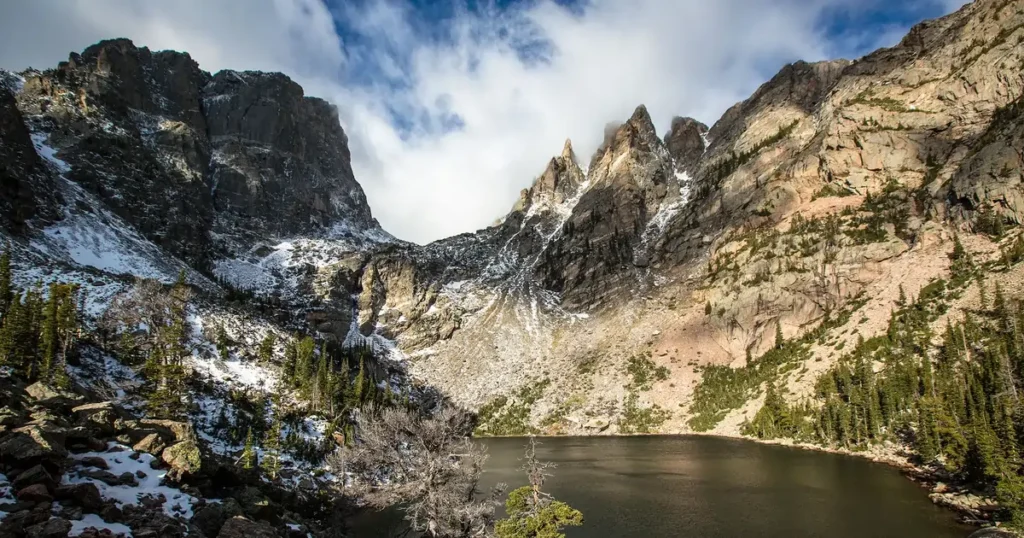
The Rocky Mountains’ expansive reach encompasses a variety of terrains, from alpine meadows and dense forests to snow-capped peaks and glacial lakes. This vastness contributes to the range’s rich biodiversity and cultural significance, attracting visitors from around the globe.
The Rocky Mountains are a biodiversity hotspot, providing habitat for numerous plant and animal species, including elk, bighorn sheep, grizzly bears, and wolves. The range also offers many recreational opportunities, from summer hiking and camping to winter skiing and snowboarding. National parks like Yellowstone, Glacier, and Banff showcase the natural wonders of the Rocky Mountains, making them a popular destination for nature lovers and adventure seekers alike.
The Cascade Range
Stretching from British Columbia in Canada to Northern California in the United States, the Cascade Range is renowned for its stunning volcanic peaks, including Mount Rainier and Mount Shasta. These dramatic mountains are interspersed with lush forests, crystal-clear lakes, and powerful rivers, creating a breathtaking backdrop for outdoor enthusiasts and nature lovers.
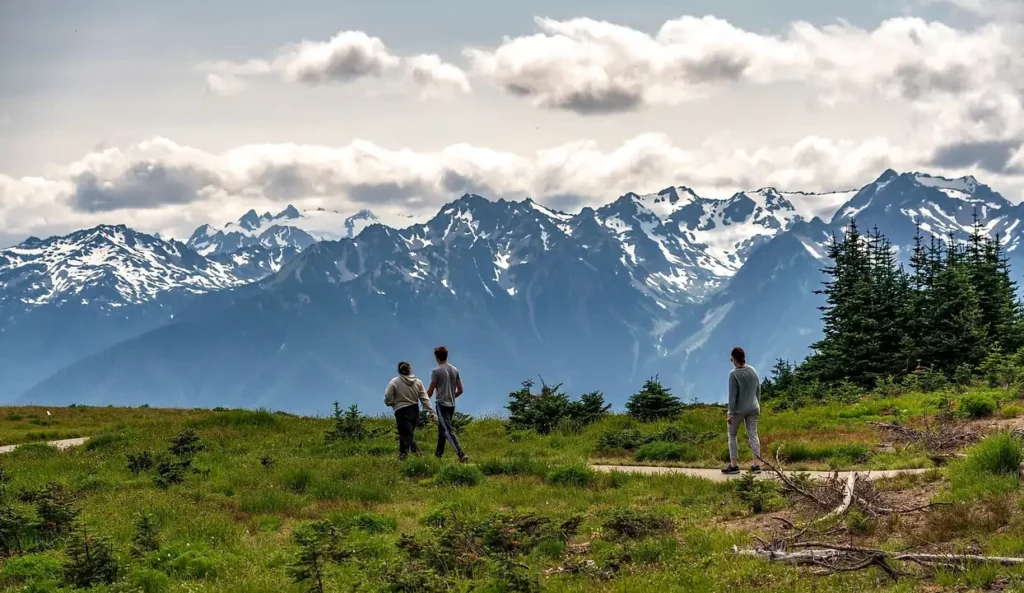
The Cascade Range’s volcanic origins have shaped its dramatic landscape, with towering peaks like Mount Hood and Mount Baker dominating the skyline. The active volcanoes like Mount St. Helens remind us of the Earth’s dynamic forces. The range’s fertile volcanic soil also nurtures a rich ecosystem, supporting diverse plant life, including towering Douglas firs, Western red cedars, and vibrant wildflowers. This combination of fiery geology and verdant landscapes makes the Cascade Range a unique destination for those seeking to explore the top 10 tallest mountains of North America.
The Cascade Range is a haven for outdoor enthusiasts, offering a plethora of activities throughout the year. Hiking, mountaineering, and rock climbing are popular pursuits for those drawn to the challenge of the top 10 tallest mountains of North America. The range transforms into a snowy wonderland in winter, perfect for skiing, snowboarding, and snowshoeing. The range’s numerous national parks and protected areas, such as Crater Lake National Park and Mount Rainier National Park, provide opportunities for tranquil exploration, scenic drives, wildlife viewing, and camping in picturesque settings.
The Sierra Nevada
Nestled in California, the Sierra Nevada is a mountain range renowned for its granite cliffs, alpine meadows, and giant sequoia trees. Mount Whitney stands tall among its many peaks and is the highest mountain in the contiguous United States. This iconic range, part of the American Cordillera, offers a haven for outdoor enthusiasts and a glimpse into the geological forces that shaped North America’s top 10 highest mountains.
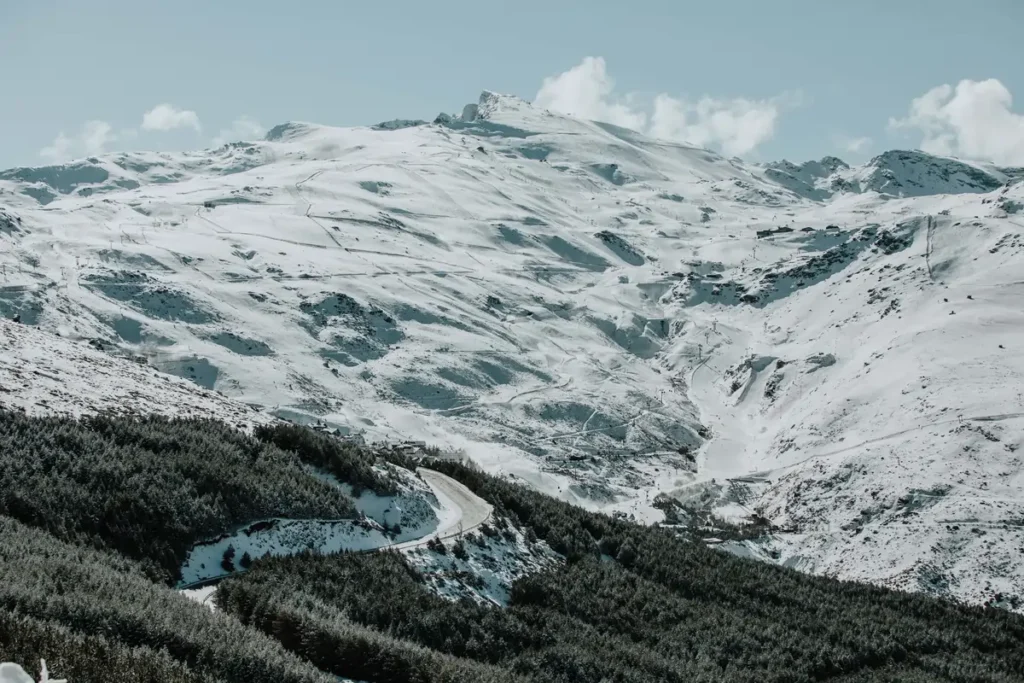
The Sierra Nevada’s diverse ecosystems range from lush forests to stark, windswept peaks, making it a treasure trove of biodiversity. The range’s unique geological features, including glacial valleys and granite domes, are a testament to the powerful forces that continue to shape this landscape.
Mount Whitney, towering at 14,505 feet, is the highest peak in the Sierra Nevada and the highest mountain in the contiguous United States. Its summit offers panoramic views of the surrounding wilderness, including the Owens Valley and the vast expanse of the Mojave Desert. Climbing Mount Whitney is a challenging but rewarding, drawing mountaineers worldwide who seek to conquer one of North America’s top 10 highest mountains.
The Sierra Nevada is a biodiversity hotspot harboring many plant and animal species. From the towering sequoia trees in the lower elevations to the alpine meadows and rocky slopes above the tree line, the range’s diverse ecosystems provide habitats for various wildlife, including black bears, marmots, and the elusive Sierra Nevada bighorn sheep. The Sierra Nevada’s geological history is equally fascinating. The range’s granite formations, carved by glaciers over millennia, are a testament to the powerful forces shaping this landscape.
Other Notable Ranges
North America’s diverse geography encompasses a variety of other notable mountain ranges:
- Sierra Madre (Mexico): This extensive range features volcanic peaks, deep canyons, and diverse ecosystems.
- Coast Mountains (Canada): Hugging the Pacific coast of North America, the Coast Mountains are a dramatic range characterized by steep slopes, glaciers, and fjords. These mountains are a playground for outdoor enthusiasts, offering opportunities for skiing, mountaineering, and breathtaking vistas.
- Appalachian Mountains (USA): Stretching for over 2,000 miles along the eastern edge of North America, the Appalachians are an ancient range known for their rolling peaks, lush forests, and rich biodiversity. While not as towering as the Top 10 Tallest Mountains of North America, they offer a different kind of majesty, with hiking trails, waterfalls, and stunning autumn foliage.
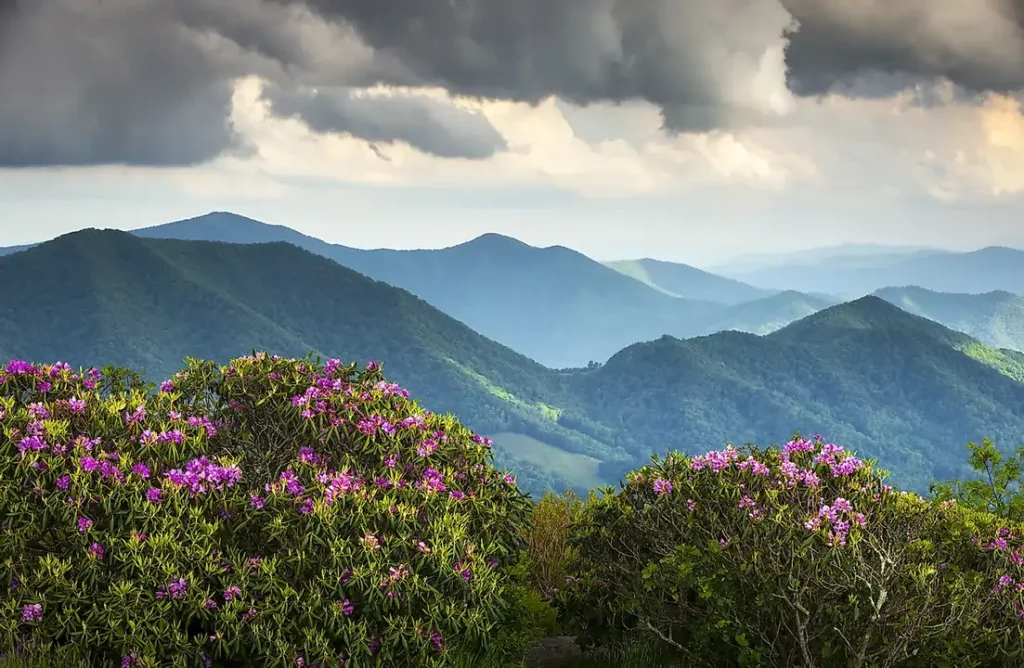
While not reaching the same dizzying heights as the Top 10 Tallest Mountains of North America, these other ranges contribute to the continent’s diverse landscape and offer a wealth of natural beauty and recreational opportunities.
⫸ Conclusion
The Top 10 Tallest Mountains of North America are awe-inspiring testaments to the continent’s diverse geological history and rich cultural tapestry. From the volcanic peaks of Mexico to the icy summits of Alaska, each mountain holds unique stories of tectonic shifts, indigenous traditions, and daring exploration. These majestic giants continue to inspire adventurers, scientists, and nature enthusiasts alike, offering a glimpse into the raw power and beauty of the natural world.
Whether you’re drawn to the challenge of scaling Denali, the tallest peak in North America, or simply captivated by the breathtaking vistas from afar, these mountains beckon us to explore, learn, and appreciate the wonders of our planet.
For those eager to delve deeper into the world of North America’s highest mountains, countless resources are available, from mountaineering guides and scientific publications to indigenous folklore and cultural narratives. Let your curiosity guide you, and may your journey into the heart of these mountains be as rewarding as the peaks themselves.

